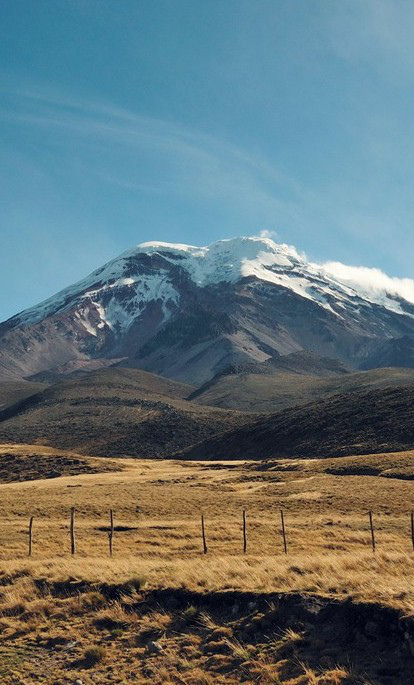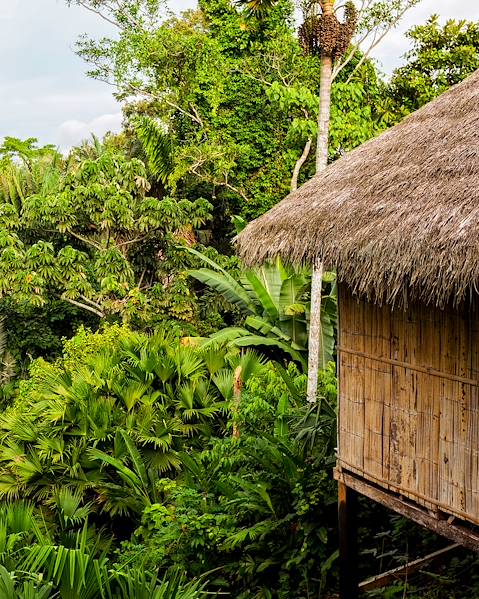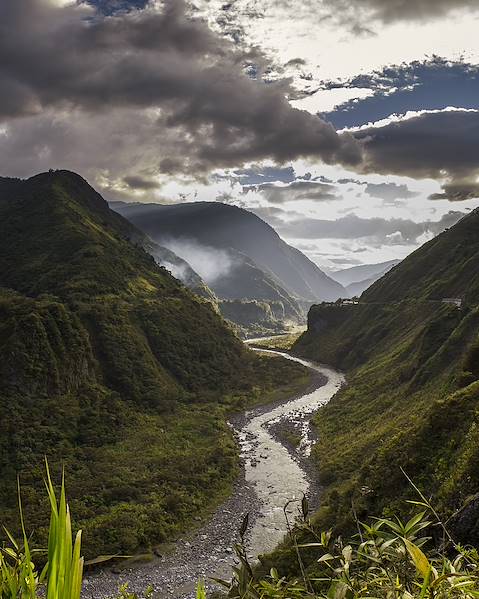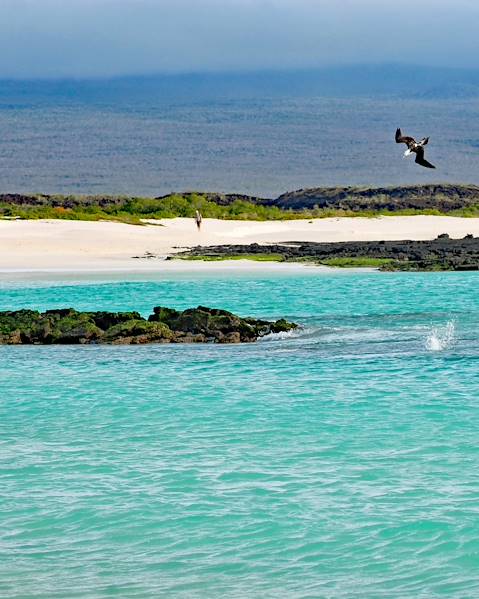From the top of the Andes to the depths of the Pacific, the Galapagos Islands to the Amazon, Ecuador is a biological powerhouse. This compact South American nation has much to protect and has planted the seeds for a greener, more sustainable future. The World Travel Awards named Ecuador South America’s Leading Green Destination in 2022 and the World’s Leading Green Destination in 2021. However, finding the balance between growing the economy and protecting the land isn’t proving easy. Let’s take a closer look at sustainability in Ecuador.
The Global Importance of Ecuador
Ecuador plays an essential part in the planet's ecological balance, as its geography and climate make it one of the world’s most biodiverse countries. The country is made up of high-Andean ecosystems, humid Amazon rainforests, Pacific mangroves, the Galapagos Islands and even the Humboldt Current.
- Ecuador has 17 million inhabitants (including 1.1 million indigenous people)
- It is the most megadiverse country in relation to its size
- 59% of its territory is covered by native vegetation
- It’s home to 6% of the planet’s species of flora and fauna
- There are 13 national parks and 18 wetlands of international relevance
- 30% of the country is under some form of conservation
Despite, or perhaps due to, its astounding natural assets, the journey towards achieving sustainability in Ecuador is a story of successes and setbacks.
Ecuador’s Green Constitution
In 2008, Ecuador became the first country in the world to recognise the rights of nature. Its constitution contains the following mandate: ‘Nature or Pacha Mama, where life is reproduced and realised, has the right to full respect for its existence and the maintenance and regeneration of its vital cycles, structure, functions and evolutionary processes’. The rights of indigenous people were also recognised, including their right to maintain their languages, customs and land. Putting nature and tradition at the heart of its statute enables Ecuador to focus on solutions that encourage nature and people to thrive together.
Battling Deforestation
Deforestation in the Amazon is one of the most urgent problems faced globally. For its size, Ecuador has the highest annual deforestation rate of any nation in the Western Hemisphere. Primary contributors include traditional unsustainable agricultural practices and construction. To prevent deforestation and degradation, Ecuador's government developed the Socio Bosque conservation programme that pays private and communal landowners to protect their forests. The scheme is a successful example of a voluntary incentive-based initiative with combined environmental and socio-economic benefits.
Fossil Fuel Reliance
A dependence on fossil fuels is also causing problems for sustainability in Ecuador. When oil was found there in the 1960s, the economy quickly grew, but now the nation is facing the long-term effects of oil exploitation. Setbacks have included the Yasuni-ITT Initiative, which was to leave 900 million barrels of oil underground, preventing over 400 million tonnes of CO2 emissions. The project was abandoned when the international community declined to financially contribute to Ecuador’s investment in renewable energy. In addition to oil exploitation, Ecuador is also facing the expansion of large-scale mining operations in indigenous territories and high-biodiversity areas with large numbers of endemic species.
A Focus on Water
Ecuador houses two incredible ecosystems that support the country’s freshwater supply: cloud forests and alpine grasslands. These sponge-like areas absorb moisture from glacial snowmelt and fog, filtering pollutants and regulating the flow of water. However, climate change, deforestation and construction reduce the natural ability of cloud forests and grasslands to supply clean water. Since 2000, Ecuador has pioneered an innovative solution in the form of water funds. Trust managers invest payments from water and other utility bills in financial markets, then dispense the profits to fund conservation and watershed management. Ecuador’s success has seen the water funds model scaled to several other countries including Mexico, Colombia, Peru and Chile. Still, the challenges continue, including treating wastewater, tackling unsustainable fisheries, protecting precious marine life and reducing pollution in the country’s rivers, which eventually ends up in the ocean.
Urban Efforts
Ecuador’s awareness regarding the environment can be felt in urban as well as in rural spaces. Signalling a notable change from a focus on the economy to a focus on the liveability of spaces, recent city initiatives have prioritised building green spaces and shifting to eco-friendly public transport. Each summer, Guayaquil becomes the environmental capital of Latin America and the Caribbean. Since 2013, the Latin American Green Awards have taken place in Ecuador’s largest city, recognising the best sustainable development projects in the region and serving as a showcase for initiatives promoting a green economy.
Ecotourism in Ecuador
The national government, hotel owners and local communities are also working together to promote ecotourism, via a range of large- and small-scale projects. Hailed as the world’s first ‘green’ airport, Galapagos Ecological Airport (formally Seymour Airport) was built in 2012 to run solely on solar and wind power, plus 80% of its infrastructure is made from materials recycled from old buildings. And from trekking across the Andes to rafting down the Amazon River to climbing active volcanos, thoughtful travellers can experience Ecuador’s biodiversity and rich geography while staying sustainable.
- Immersion in a rainforest reserve: Located in the Chocó bioregion, Mashpi is a haven for biodiversity. When it comes to sustainability in Ecuador, Mashpi is in a class of its own: offering visitors the chance to experience pristine natural beauty while also playing an important role in conservation.
- Green accommodation on the Galapagos Islands: A range of sustainable stays are available in the Galapagos archipelago. Two excellent options on Santa Cruz Island are Pikaia Lodge and Finch Bay Hotel, where ecological credentials include innovative waste processing and recycling.
- Eco-adventures in the Andes: One of the best ways to see the highland region surrounding Ecuador’s capital Quito is on a riding safari, stopping off at haciendas and villages along the way. Alternatively, climb Mount Cotopaxi at sunrise to enjoy exceptional panoramic views of the countryside.
Anyone interested in sustainability in Ecuador can enjoy these magical moments and more. Contact our experts for more details.
















